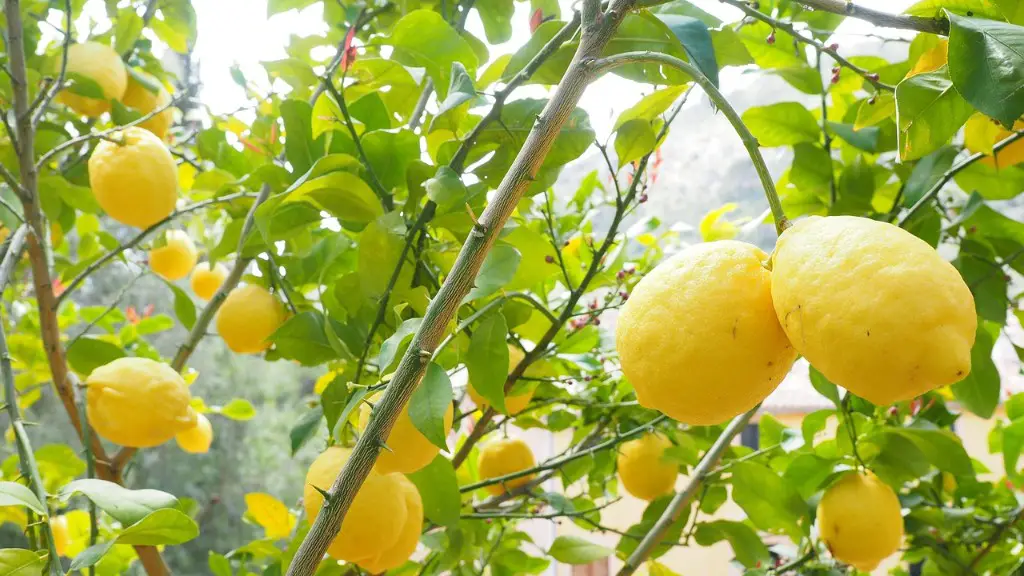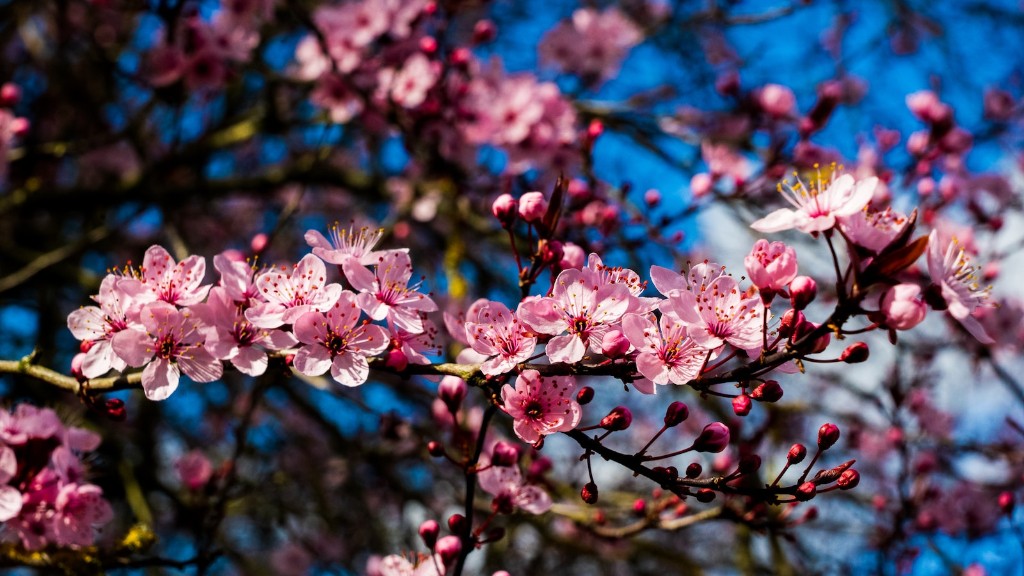Lemon trees are a great addition to any garden, as they provide a variety of culinary and medicinal benefits. How long a lemon tree grows depends on several factors, including the climate where it’s planted, the variety of tree, soil conditions and the amount of care it receives. To get the most out of a lemon tree, it’s important to give it optimal growing conditions.
Firstly, lemon trees grow best when planted in warm, sunny climates that don’t experience temperatures below 30 degrees. They thrive in full sun, but they can also tolerate partial shade. Planting a lemon tree in soil that has good drainage is also important. Soils that are high in organic matter will help the lemon tree’s roots to grow better.
Fertilizing a lemon tree is also important to ensure proper growth. Most lemon trees will benefit from an application of fertilizer every several weeks, using a balanced fertilizer like 10-10-10 or 8-8-8. When it comes to watering the tree, it’s best to use drip irrigation or a soaker hose to keep the roots watered but not wet.
The type of lemon tree also affects how long it will take to grow. Some lemon trees, such as ‘Eureka’ and ‘Meyer’, can take up to five years to reach their full size. Other lemon trees, such as ‘Improved Meyer’, can reach their full size in as little as two to three years. Depending on the type of lemon tree and its growing conditions, it can take anywhere from two to ten years to reach its full size.
Finally, many factors can affect how well a lemon tree grows and how quickly it reaches maturity. For instance, if the tree is not watered properly, is exposed to extreme temperatures, or is planted in poor soil, it likely won’t reach its full size for several years. It’s also important to prune the tree regularly to keep it healthy and to prevent it from becoming too large for the space it’s planted in.
Fertilizing a Lemon Tree
Fertilizing a lemon tree is an important part of its growth and development. To ensure healthy, rapid growth, it’s best to use a balanced fertilizer like 10-10-10 or 8-8-8 throughout the growing season. Fertilizer should be applied every few weeks, depending on the type of lemon tree and the soil conditions. As with other trees and plants, over-fertilization can damage the tree and stunt its growth, so it’s best to use only the recommended amount.
Different types of lemon trees have different fertilizer needs. The ‘Improved Meyer’ lemon tree, for example, requires more nitrogen than other types of lemons. To ensure optimal growth, it’s important to find out what kind of lemon tree you have and the nutrient needs. Additionally, it’s important to soil test periodically to check for pH and nutrient levels.
Pruning a Lemon Tree
Pruning is an important part of keeping a lemon tree healthy and stimulating proper growth. Pruning should be done regularly to keep the tree at a manageable size and to promote healthy new growth. Pruning involves cutting away dead or diseased branches, as well as cutting back any branches that are too large or are interfering with overall proper growth. Light pruning can be done throughout the year, while heavier pruning should be done after the tree has finished blooming.
When pruning a lemon tree, it’s important to use sharp, sterilized pruning shears. Before pruning, it’s a good idea to remove any dead or diseased branches from the tree. It’s also important to make sure that the pruning shear blades are sharp, as dull blades can cause tearing, which can damage the tree and lead to disease.
When done correctly, pruning a lemon tree can help to encourage healthy, rapid growth. Additionally, it can help to control the size of the tree and keep it at a manageable height. Pruning also helps to remove any diseased or damaged branches from the tree, and can help to prevent the spread of disease.
Harvesting Lemons
Harvesting lemons is an exciting time for any lemon tree grower. Lemons are typically ready to harvest when they reach a deep yellow color and feel slightly soft. Different types of lemon trees ripen at different times, so it’s important to keep track of the variety of tree you have and the expected ripening time.
Once the lemons have ripened, they should be picked carefully and immediately used or stored. If lemons are left on the tree too long, they can become over-ripe and will no longer be usable. If you are storing lemons, it’s best to keep them in the refrigerator, where they will stay fresh for several weeks.
Lemon trees can provide a great source of fresh lemons, but it’s important to give the tree proper care to ensure optimal growth and a good harvest. With proper care, a lemon tree can provide a plentiful supply of delicious lemons for several years.
Protecting a Lemon Tree from Pests and Diseases
Lemon trees can fall victim to a variety of pests and diseases, but with proper care and monitoring, these can be prevented and controlled. When planting a lemon tree, it’s important to check for signs of pests or diseases and to take immediate action to address the problem. Additionally, it’s important to inspect the tree regularly to determine if there is any pest or disease activity.
Common pests of lemon trees include aphids, mealybugs, and scale insects. These pests can be controlled with natural solutions, such as using horticultural oil or a baking soda solution. Diseases such as powdery mildew, leaf spot, and alternaria can be prevented with proper pruning and sanitation, as well as the application of fungicide. Additionally, an organic fertilizer with added minerals and trace elements can help to prevent these diseases.
Lemon trees can be a great addition to any garden, but they require special care to ensure optimal growth. Regular monitoring and protection from pests and diseases are important to ensure that your lemon tree will produce healthy and flavorful lemons for many years.
Winter Care for Lemon Trees
Caring for a lemon tree during the winter months is an important part of ensuring its health and productivity. When the weather turns cold, lemon trees should be pruned back, watered sparingly, and fertilized at the beginning of the season. Additionally, it’s important to mulch around the base of the tree to insulate the roots and keep them from freezing.
Lemon trees will also require protection from extreme cold and wind. A layer of burlap can provide some protection from cold winds, and adding a frost blanket will also help to keep the temperatures from dropping too low. If temperatures are expected to dip below freezing, it may be necessary to use a landscape heater to provide additional warmth.
Finally, it’s important to protect lemon trees from frost. Frost can damage the fruit and leaves of the tree, so extra care must be taken to ensure that frost isn’t forming. If temperatures are expected to dip below freezing, it’s a good idea to cover the tree with a frost blanket or spray it with an anti-frost spray.
In order to ensure a good harvest, it’s important to give lemon trees proper care during the winter months. With proper pruning, watering, and protection from the elements, lemon trees can stay healthy and produce a plentiful crop of lemons for many years.

